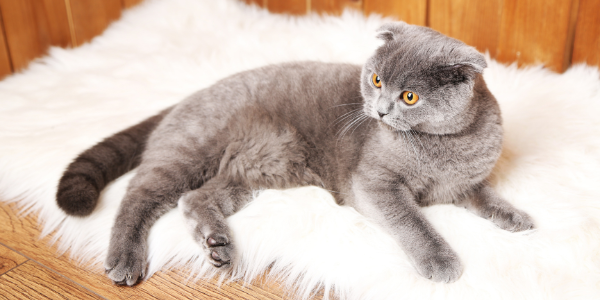Wallace, the eleven-year-old British Shorthair cat, was a polite and dignified little gentleman. When he was found passing urine in the bathroom sink, his owner, Frances, was startled, to say the least.
On closer inspection, Frances noticed that Wallace seemed to be straining uncomfortably, and his urine had a pink tinge. Since Wallace was a male cat (and Frances remembered a serious bladder blockage episode in her friend’s male cat), she decided to phone her vet for advice straight away.
The veterinary staff reassured Frances that Wallace’s continued bright appearance, eating, and ability to pass urine were good signs, but it was safer to perform a prompt check on him regardless.
Later that morning, Wallace was assessed by his regular veterinarian. He was found to be well-hydrated and appeared generally healthy. Fortunately, he also showed no symptoms of urinary blockage at that time. However, whilst his bladder was not enlarged, it did feel a bit irregular and thickened.
Given her cat’s age, Frances was happy to take the vet’s recommendation that Wallace be admitted for urine tests, blood tests, and bladder imaging. His urine tests showed significant amounts of blood and mineral crystals and evidence of infection. On his abdominal x-rays, he had multiple bladder stones – solidified urine minerals irritating the bladder lining.
Given that testing so far had indicated Wallace’s urine crystals were most likely of a chemical composition known as “struvite,” Frances elected to have him started on a course of antibiotics and a special prescription diet that can dissolve this type of bladder stone over several weeks.
To Frances’s relief, Wallace responded well to the treatment. Two months later, repeat testing showed that the bladder stones and infection had resolved. To dignify Wallace’s great relief, he no longer feels the urge to sully the sink.
This fictional case study has been created to illustrate how urinary health issues in cats can be managed and is not based on a real-life case.

